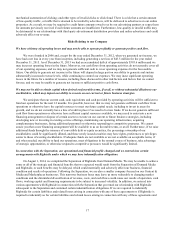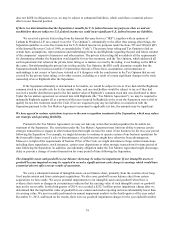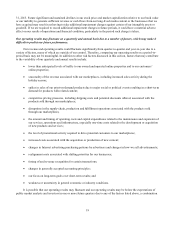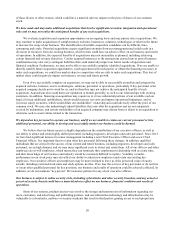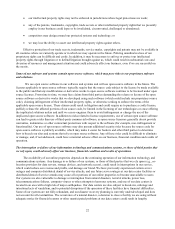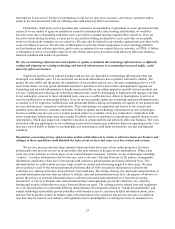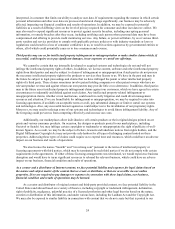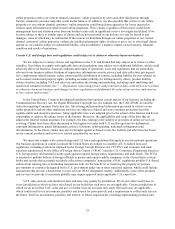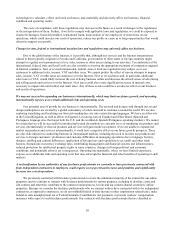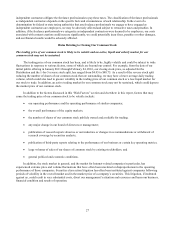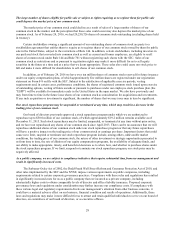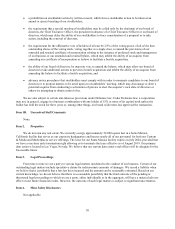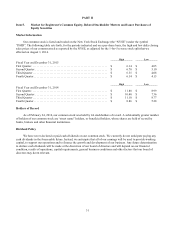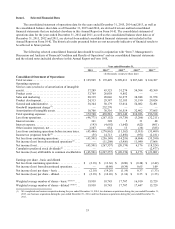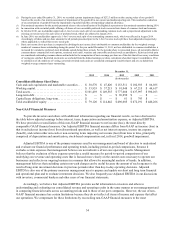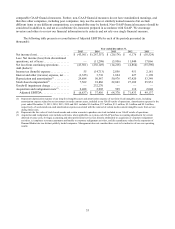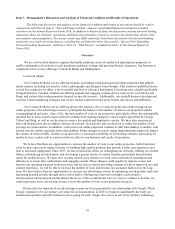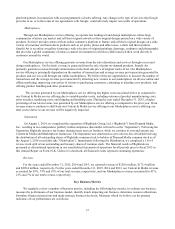Enom 2015 Annual Report Download - page 29
Download and view the complete annual report
Please find page 29 of the 2015 Enom annual report below. You can navigate through the pages in the report by either clicking on the pages listed below, or by using the keyword search tool below to find specific information within the annual report.27
independent contractors obligate the freelance professionals to pay these taxes. The classification of freelance professionals
as independent contractors depends on the specific facts and circumstances of each relationship. In the event of a
determination by federal or state taxing authorities that any freelance professionals we engage or have engaged as
independent contractors are employees, we may be adversely affected and subject to retroactive taxes and penalties. In
addition, if the freelance professionals we categorize as independent contractors were deemed to be employees, our costs
associated with content creation could increase significantly, we could potentially incur fines, penalties or other damages,
and our financial results would be adversely affected.
Risks Relating to Owning Our Common Stock
The trading price of our common stock is likely to be volatile and an active, liquid and orderly market for our
common stock may not be sustained.
The trading price of our common stock has been, and is likely to be, highly volatile and could be subject to wide
fluctuations in response to various factors, some of which are beyond our control. For example, from the date of our
initial public offering in January 2011 through February 24, 2016, our closing stock price, as adjusted for the
Distribution and the 1-for-5 reverse stock split, has ranged from $4.05 to $48.75. As a result of the reverse stock split
reducing the number of shares of our common stock that are outstanding, we may have a lower average daily trading
volume, which could also lead to greater volatility in the trading price of our common stock or a less liquid market for
our stock to trade. In addition, an active trading market for our common stock may not be sustained, which could depress
the market price of our common stock.
In addition to the factors discussed in this “Risk Factors” section and elsewhere in this report, factors that may
cause the trading price of our common stock to be volatile include:
x our operating performance and the operating performance of similar companies;
x the overall performance of the equity markets;
x the number of shares of our common stock publicly owned and available for trading;
x any major change in our board of directors or management;
x publication of research reports about us or our industries or changes in recommendations or withdrawal of
research coverage by securities analysts;
x publication of third-party reports relating to the performance of our business or certain key operating metrics;
x large volumes of sales of our shares of common stock by existing stockholders; and
x general political and economic conditions.
In addition, the stock market in general, and the market for Internet-related companies in particular, has
experienced extreme price and volume fluctuations that have often been unrelated or disproportionate to the operating
performance of those companies. Securities class action litigation has often been instituted against companies following
periods of volatility in the overall market and in the market price of a company’s securities. This litigation, if instituted
against us, could result in very substantial costs, divert our management’s attention and resources and harm our business,
financial condition and results of operation.


